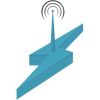How to Use Webmail (Roundcube/Horde) to Access Your Emails
Webmail allows you to access your email directly from your browser—no need for third-party email clients like Outlook or Thunderbird. At Sternhost, we provide two powerful webmail options: Roundcube and Horde.
In this article, we’ll walk you through how to access and use Webmail through cPanel, what each client offers, and how to make the most of your email hosting.
What is Webmail?
Webmail is an online interface that lets you check your email from anywhere in the world using your web browser. When you host a website and email service with Sternhost, you get built-in access to Webmail via Roundcube and Horde.
Accessing Webmail via cPanel
You can access Webmail in two primary ways:
✅ Method 1: Login via cPanel
-
Log in to your cPanel:
👉 https://yourdomain.com/cpanel
(replace with your actual domain) -
Under the Email section, click “Email Accounts.”
-
Locate the email address you want to access, then click “Check Email.”
-
Choose either Roundcube or Horde as your default Webmail client.
-
You’re in! Begin sending or managing your email.
✅ Method 2: Direct Webmail Login
Use this if you want to go straight to Webmail without entering cPanel:
-
Go to 👉 https://yourdomain.com/webmail
(replaceyourdomain.comwith your domain) -
Enter your full email address (e.g.,
info@yourdomain.com) and password. -
Choose between Roundcube or Horde and access your inbox.
Roundcube vs Horde: What’s the Difference?
| Feature | Roundcube | Horde |
|---|---|---|
| Interface | Sleek, modern, user-friendly | Functional but more complex UI |
| Calendar | ❌ Not built-in | ✅ Built-in |
| Task Management | ❌ Not available | ✅ Available |
| Best For | Everyday email use | Power users needing extra tools |
🟢 Choose Roundcube if:
-
You want a clean and simple experience.
-
You mainly send, receive, and organize emails.
🟠 Choose Horde if:
-
You need calendar, task, and note features.
-
You prefer a full-featured webmail suite.
Key Features of Webmail
-
📥 Read and reply to emails
-
📤 Send emails with attachments
-
📁 Organize messages into folders
-
🔍 Search your inbox
-
🧾 Set up email filters and forwarders
-
🔒 Change your email password
-
🚫 Mark spam and block senders
📌 Pro Tip: Want to forward Webmail to Gmail? Learn how to set up email forwarding in cPanel.
Managing Your Email Storage
Your webmail inbox shares storage with your hosting account. To avoid hitting limits:
-
Regularly delete old emails or archive them.
-
Empty your spam and trash folders.
-
Use IMAP with desktop clients to manage space.
Need more space? Upgrade your hosting plan for higher storage limits.
Common Troubleshooting Tips
❓ Can’t log in?
-
Double-check your email address and password.
-
Make sure your domain is pointing to Sternhost and DNS is properly set.
🛑 Email not sending?
-
Ensure SMTP settings are correct.
-
Check if your domain’s DNS records (especially MX) are configured.
If problems persist, contact Sternhost Support.
Final Thoughts
Webmail is an essential tool for managing your email on the go. Whether you prefer the minimalism of Roundcube or the features of Horde, Sternhost ensures you have a secure and user-friendly environment to handle your communication needs.
















